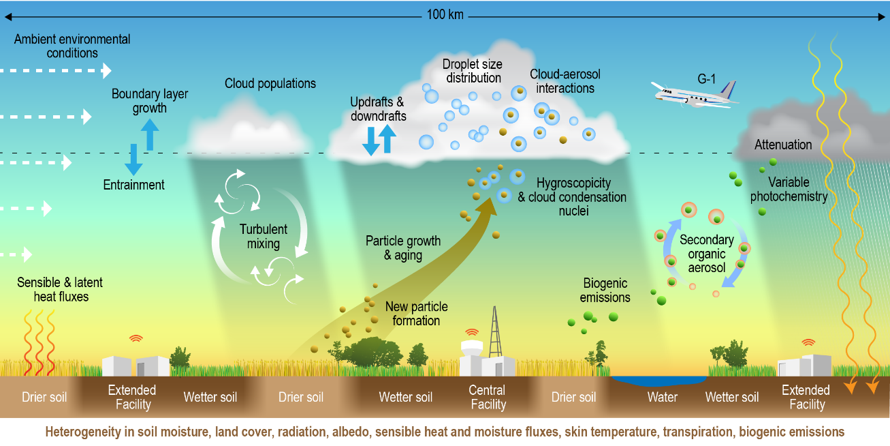A new perspective on shallow convective clouds
Submitter
Fast, Jerome D — Pacific Northwest National Laboratory
Area of research
Cloud Distributions/Characterizations
Journal Reference
Science
Shallow clouds occur over many areas of the world and are an important component of Earth’s atmospheric radiation budget. In addition to local and regional weather conditions, land-atmosphere interactions and aerosol-radiation-cloud interactions influence the life cycle of shallow clouds and their properties. Because shallow clouds are too small to be explicitly simulated by weather and climate models, they must be represented by parameterizations that often contain uncertainties. During a recent field campaign conducted in the Southern Great Plains by the U.S. Department of Energy’s Atmospheric Radiation Measurement (ARM) user facility, researchers collected a unique data set needed to better understand the life cycle of shallow convective clouds that form within 1 to 2 kilometers of the Earth’s surface, including their formation and transition to deeper and more long-lived clouds.
Impact
The data set from ARM’s Holistic Interactions of Shallow Clouds, Aerosols, and Land Ecosystems (HI-SCALE) field campaign includes coincident measurements of cloud microphysics and dynamics, boundary-layer structure, land surface properties, and aerosols—all needed to better understand the life cycle of shallow convective clouds. Researchers are using HI-SCALE measurements to evaluate and improve the numerical representation of shallow convective clouds in models.
Summary
Uncertainties in shallow convective cloud parameterization predictions arise from many sources. Researchers require coincident data to achieve a more complete understanding of the life cycle of shallow convective clouds, including the transition from shallow to deep convection, and to improve model parameterizations of convection. Long- and short-term measurements collected around ARM’s Southern Great Plains (SGP) atmospheric observatory in Oklahoma since 1992 have provided valuable information to improve the understanding of specific processes associated with many cloud types.
Through HI-SCALE, a field campaign conducted around the SGP in spring and summer 2016, researchers sought to address some remaining scientific issues associated with shallow convective clouds:
- the effects of heterogeneous land-use, vegetation, and soil moisture conditions (resulting from natural or agricultural activities) on boundary-layer mixing and consequently cloud formation, initiation of precipitation and drizzle, and transition from shallow to deep convection
- the role of cloud population—size and organization—and entrainment on precipitation onset and cloud lifetime under different aerosol environments
- the sensitivity of cloud condensation nuclei, or CCN, number concentrations to the mixing state of secondary organic aerosol resulting from natural and manmade sources
- the effect of new particle formation on the growth of aerosol populations and consequently CCN.
HI-SCALE researchers collected extensive airborne measurements around the SGP, using ARM’s Gulfstream-159 (G-1) research aircraft. They coupled those data with routine SGP megasite, satellite, and high-resolution land use data sets. HI-SCALE found large local to regional variations in cloud populations, as well as in land-atmosphere interactions and aerosol populations, that are not resolved by climate models.


